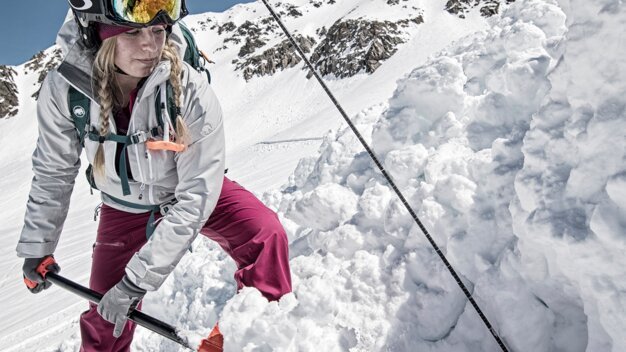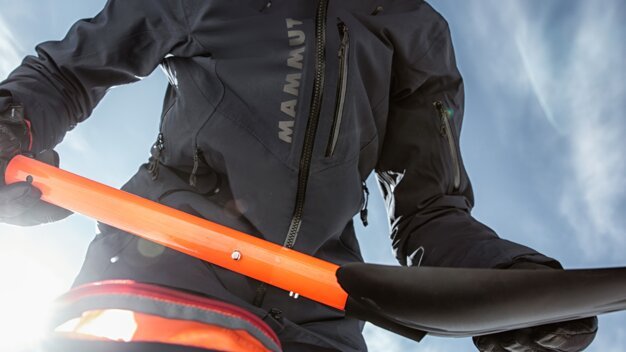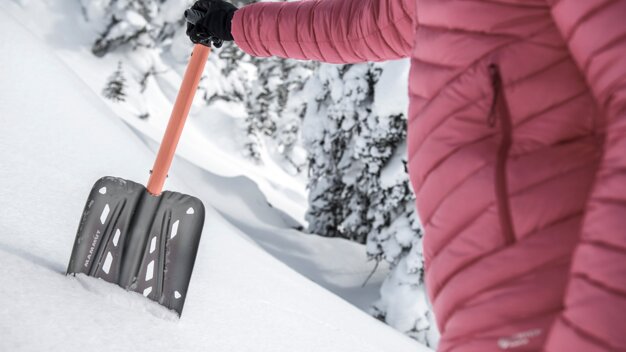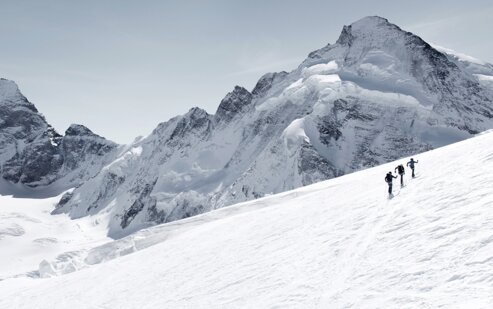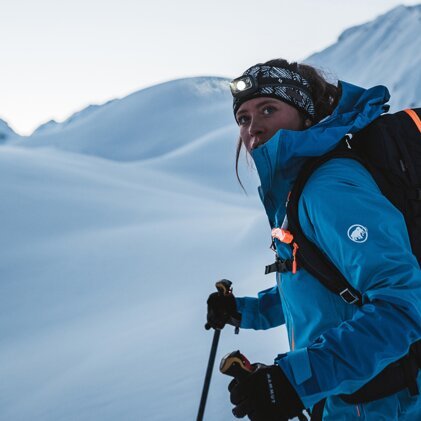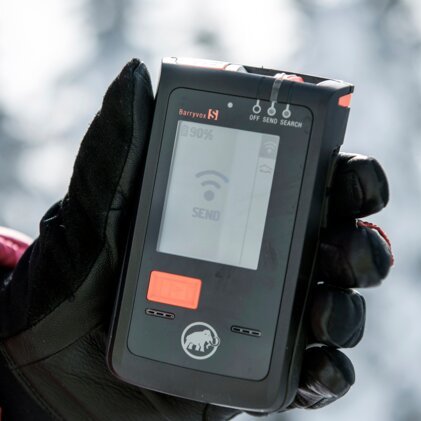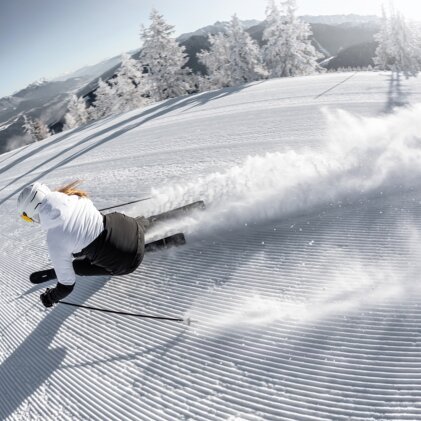
Snowboard? Check! Ski goggles? Check! Helmet? Check! Ready to go? Not yet! If you love the backcountry, there are some other important items on your pack list. After all, avalanches are a danger that should never be underestimated if you move away from the groomed slopes.
That’s why you should always carry a standard set of avalanche safety equipment with you. Apart from an avalanche transceiver and a snow probe (plus, ideally, an avalanche airbag), there’s one other “must-have item” for every freerider or ski tourer: an avalanche shovel.
Would you like to know more about this life-saving piece of backcountry equipment? Read on and discover useful tips by INTERSPORT Rent and Mammut on what to look for when buying an avalanche shovel!
What is an avalanche shovel?
An avalanche shovel is one of the three essential pieces of backcountry safety equipment. It is used to dig buried persons out of the snow in the aftermath of an avalanche. A good-quality shovel can significantly reduce rescue time, thus increasing the chances of survival.
Apart from use in an emergency, an avalanche shovel can be used for a number of other tasks.
Avalanche shovels can come in handy for …
- … building kickers and jumps.
- … building snow shelters.
- … digging pits for snow stability tests.
- … digging out your car.
- … building an emergency rescue sled.
What makes a good avalanche shovel?
When you have to use an avalanche shovel in an emergency, every second counts. That’s why it’s worth the money to get a high-quality shovel you can rely on, such as Mammut’s Alugator Pro Light Hoe.
A good avalanche shovel should be …
- … robust and stable,
- … ergonomic,
- … lightweight,
- … easy to pack and
- … simple to use.
What is a certified avalanche shovel?
Certain avalanche shovels on the market are UIAA certified. This means that they meet the requirements defined by UIAA standard 156 for avalanche rescue shovels, making them particularly reliable and safe.
Did you know? All Mammut shovels meet the UIAA standard and are marked with the UIAA safety label. This means that they …
- … have a minimum blade size of 500 cm2 to ensure fast rescue.
- … are bending & pulling tested for absolute reliability in compressed snow.
- … have a minimum shovel length of 75 cm for ergonomic and powerful shovelling.
What should you keep in mind when buying an avalanche shovel?
If you’re looking for a reliable, high-quality shovel, there are several factors you need to consider.
Material
- Metal or aluminium: more reliable and solid than plastic
- Plastic: lightweight, but tends to bend
- Carbon: reduced overall weight, but expensive
- Titanium: high strength and low weight
Blade shape and size
Shovel blades come in different shapes and sizes. Some are flat, some are curved, and others have serrated edges to make it easier to cut through snow and ice. Some blades also have holes in them, allowing you to build snow anchors or rescue sleds with them.
Choosing the right blade size can be a bit tricky. Both small and large blades have their advantages:
Smaller blades are ...
- … lighter and easier to handle.
- … less efficient at chopping and moving snow.
Larger blades …
- … allow you to move snow more quickly.
- … take more strength to operate.
By the way: Whether you go for a smaller or larger blade, the right shovelling technique will make digging significantly easier. It’s best to have the pros teach you the ropes during an avalanche safety course.
Handles and grips
Obviously, the most important aspect of choosing an avalanche shovel handle is that it feels good in your hands. Plus, make sure that it fits inside your backpack, as any objects sticking out could get ripped off during a fall.
In terms of shaft length, longer shafts give you more leverage, while shorter shafts are more manoeuvrable. The best of both worlds: shovels with telescopic shafts.
The grips of avalanche shovels also come in different shapes, with T- and L-shaped grips being the lighter and more compact option. D-shaped grips, on the other hand, tend to be more comfortable and easier to hold.
Did you know? Some shovel shafts and blades can be turned into hoes. This can be useful when chopping is more efficient than shovelling.
INTERSPORT Rent tip
If you love off-piste skiing, snowboarding or ski touring, INTERSPORT Rent is the perfect choice for you to test the latest backcountry equipment.
Put your favourite brand’s new snowboard to the test in the powder, rent the latest touring skis or browse our vast range of freeride clothing! Our RENTertainers on site will be happy to show you some highlights for your next backcountry adventure.
Related articles
You may also be interested in:
